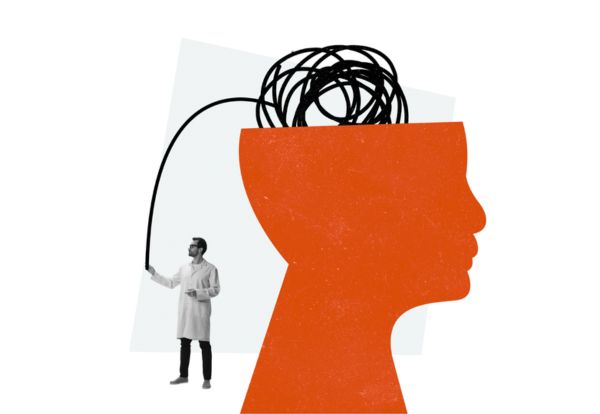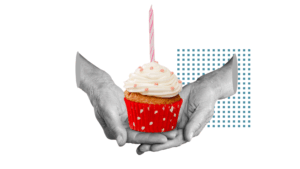How stories make people care about your product
You know that feeling when you’re trying to get others to see what you see? You’ve laid out the data, the logic, the perfectly reasoned argument… and they still respond with a faint, slightly awkward smile and a, “Yeah, maybe.”
Your message falls flat. Impact is minimal.
Here’s the truth: emotions outlast evidence. Numbers may make sense of the world, but stories make us care about it. Once you understand the simple anatomy of a story, everything changes.
In this article, we’ll explore the neuroscience and psychology behind storytelling. But first, to make sense of all of that, we’ll start, as most meaningful lessons do, with a story.
The brilliant storytelling queen
Meet Clara. Clara was brilliant. Spreadsheet brilliant, roadmap brilliant, Jira-ticket brilliant, basically, brilliant in any metric that could be measured. She loved structure, logic, and data. Ask her about her product, and she could rattle off every metric down to the decimal.
Her roadmaps were elegant. Her Jira tickets meticulous. Her reasoning, unshakeable. She was, by any measure, an exceptional product manager.
But there was a problem. Her senior stakeholders didn’t really listen. They didn’t engage with her presentations, couldn’t follow her numbers, and, worst of all, thought she was boring. Poor Clara. No matter how beautifully she laid out the data, it didn’t stick. Their attention drifted; phones came out. Meetings ended with polite nods and hidden yawns.
Her brilliance wasn’t landing.
It wasn’t just frustrating. It was demoralizing. Important business cases were stalling, and her confidence, along with her love for the job, was slipping. She began wondering if leaving was the only option, a huge loss not just for her, but for the company.
Then came the meeting that broke her.
She was presenting a major product redesign to the board: twenty-two slides, beautifully animated, packed with critical data, deep analysis, and, finally, her recommendations. This was the moment that could make or break the product.
But halfway through, the CFO was checking his emails. The CEO interrupted her. “Clara, I’m sorry, I don’t understand why we’re doing this again.”
Her stomach dropped. Three weeks of analysis. Hours of meticulous preparation. All of it, the data showing the risks, the projections, the stakes, seemed invisible. No one understood why it mattered. She went home defeated, frustration gnawing at her, questioning whether all her effort had been for nothing. Maybe we were doomed and AI should just get on with it, and take over her job.
That weekend, still feeling drained, Clara went to her goddaughter’s birthday party, and something caught her attention, making her look up from her sprinkled cupcake.
A mother was telling a story about a lost puppy in an enchanted forest. Twelve five-year-olds sat perfectly still, eyes wide, completely spellbound. No screens, no toys, just words. And in that moment, it hit Clara: stories had a raw, undeniable power that no spreadsheet or chart could ever match.
Clara had never really been interested in storytelling in a business context. She thought it was a bit… silly. Professional people, she believed, should be able to concentrate without stories. Why was everyone’s attention span shrinking? Social media? TikTok? Compilation videos of people tripping over? Whatever it was, she was certain grown-ups in boardrooms didn’t need bedtime stories to pay attention.
But now she thought, what the hell? If a story can hold the attention of a dozen five-year-olds, maybe it could hold a boardroom too.
So, in Monday’s meeting, she tried something new. Instead of charts, she began her presentation like this: “Let me tell you about Alex. He runs a small business. He tried our product last month. He got four steps through onboarding and then gave up. Not because he didn’t like it, but because he thought he’d done something wrong.”
Enter: Drama!
The room went silent. By framing the problem from Alex’s point of view, Clara showed the human friction in the product. Suddenly, the problem felt personal. You could almost feel Alex’s frustration in the room. Then she pitched the solution.
“Imagine Alex again. But this time, our product gives him a gentle message: You’re doing great, Alex. Just one step left. Keep going. That small change could turn 800 weekly drop-offs into 800 new customers.”
Notice: she didn’t describe a new UI element. She didn’t list a feature. She didn’t go into technical detail. Instead, she painted a picture of a better reality. For Alex, the solution wasn’t a feature, it was a transformation of his experience. Now, Clara’s stakeholders weren’t just seeing a solution, they were seeing the impact on a real person. No one checked their phones. The CFO leaned forward, fully engaged, forgetting his coffee was getting cold.
His reaction said it all. Alex’s story had built a bridge between the numbers on the screen and the human experience they represented. And what Clara pulled off wasn’t magic, it was… yes, the power of storytelling.
From that day on, Clara used stories everywhere. In team meetings, she shared customer quotes. In retros, she talked about chapters and plot twists. Her spreadsheets and metrics weren’t wasted, they became the proof that made her stories credible. Her team began to care more. Her leaders finally believed in her vision. And her customers could feel the difference in every product improvement.
A year later, Clara opened a storytelling workshop for other product managers. She started with a slide full of numbers, and everyone groaned.
Then she smiled. “Exactly, that’s how I used to make you feel,” she said. “Data gives us truth, but the story gives it life.”
And that’s how Clara, the brilliant spreadsheet queen, became Clara, the brilliant storytelling queen. Now, every time she builds something new, she starts with one question: Whose life will be better because of this? Because in the end, storytelling doesn’t replace data, it translates it into meaning. It’s how product managers stop reporting progress and start inspiring it.
How does storytelling make us care?
Storytelling is how humans make sense of the world. Before spreadsheets, slides or even books, we had stories. Stories help us remember things, persuade others and teach our children. They cut through noise, encourage teams, and help other people see what you see, and feel what you feel.
If we look at the brain during an interaction, we see that facts alone stimulate mostly the language centres. Stories, however, activate multiple regions: sensory, emotional and motor cortices. This means people don’t just hear what you say, they feel it, they imagine it, they relate it to their own memories. As a result, stories are remembered up to 22 times more than isolated facts, according to research from Stanford Graduate School of Business. For product managers, this matters, because data may convince the head, but stories move the heart, and you need both to inspire action. In other words: storytelling is the bridge between information and influence.
Paul Zak, a neurochemist, studies the biological basis of trust, cooperation, and storytelling. He calls the storytelling structure the dramatic arc, which all good books and films follow.
He discovered that a well-constructed story triggers cortisol and oxytocin. Cortisol, the stress hormone, helps us focus, concentrate, and remember. Oxytocin, the feel-good hormone, helps us trust, empathize, and connect. So how does this help us write stories?
A story must begin by creating connection, by introducing the character or the hero. You were introduced Clara, and Clara introduced Alex to her audience. Then, the story needs to describe a situation that creates tension and allows it to build into a climax. In Clara’s case, this was the meeting that broke her.
This tension engages the brain: listeners focus, concentrate, and remember. The resolution afterward stimulates oxytocin, creating trust, empathy, and a strong emotional connection. Clara succeeded because her stakeholders weren’t just processing information, they were feeling it.
Every story also has a moral or call to action. Clara’s was simple: gain commitment to improve her product. From a psychology perspective, stories work because they build empathy, show before-and-after contrast, include specifics that make them relatable, and introduce emotion that connects with listeners. The takeaway or moral gives the story meaning.
Storytelling is timeless. Humans have been telling stories around campfires for tens of thousands of years. Fires made people feel safe, held attention, and brought them together in circles of shared meaning. Great storytelling today does the same, in meetings, webinars, podcasts, or pitches, creating warmth, focus, and connection.
The formula is simple: Storytelling = Emotion + Structure + Truth
- Emotion makes people care. Without it, a story is forgettable.
- Structure organizes your message and keeps it memorable.
- Truth makes it credible. Data provides the truth; the story delivers it with impact.
Story structures
The Five-Beat Structure:
- World Before: paint the current reality. What’s broken? What’s missing?
- Inciting Incident: the “why now” moment that creates urgency. For Clara, it was the meeting that broke her.
- Quest: the hero’s journey, discoveries, setbacks, and moments of truth. Clara’s discovery happened at the children’s party listening to the puppy story.
- Transformation: introduce the new approach. Clara used storytelling to engage stakeholders.
- Moral / Call to Action: the emotional close; what do you want your audience to do next?
The Three-Act Story:
- Desire: what the hero wants
- Obstacles: the challenges they face
- Resolution: the outcome
Even complex frameworks like The Hero’s Journey share the same core elements: stability, tension, and resolution. Stories are how humans think, not just how we talk. Every chart, roadmap, or customer insight tells a story about change. The best stories have a heartbeat: stability → tension → resolution. Stability sets the scene, tension engages, and resolution creates empathy. Together, they move people to care, and when people care, they act.








